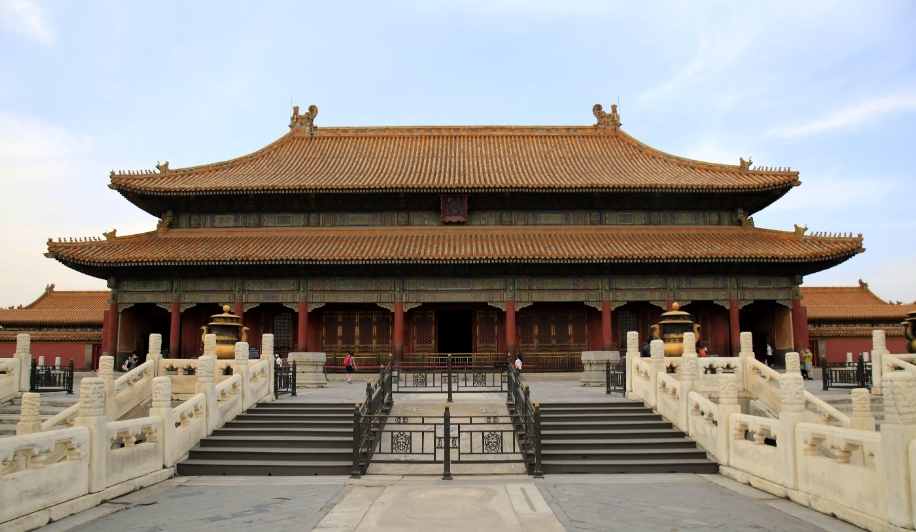
The Distinction Between Hall of Supreme Harmony and Palace of Heavenly Purity: A Tale of Two Palaces
While both architectural marvels within Beijing's Forbidden City, the Hall of Supreme Harmony (太和殿, Taihe Dian) and the Palace of Heavenly Purity (乾清宫, Qianqing Gong) are distinct entities with unique purposes and characteristics. Confusing the two is a common mistake, especially considering their proximity and the fact that the Gate of Heavenly Purity does indeed lead into the Palace of Heavenly Purity. However, to consider them merely as different sized versions of each other would be a gross oversimplification.
Here's a closer look at the distinctions:
1. Function and Significance:
-
Hall of Supreme Harmony: This grand hall, standing atop a three-tiered marble terrace, was the epicenter of imperial power. It was here that emperors held court for the most significant ceremonies, including coronations, imperial weddings, announcing the new calendar, and receiving tributes. Its sheer scale and grandeur served to emphasize the absolute authority of the emperor.
-
Palace of Heavenly Purity: Located within the Inner Court, this palace served as the emperor's private residence and the heart of his personal life. It was here that the emperor dealt with daily administrative tasks, received close officials, and retired for the night. While grand in its own right, it lacked the imposing aura of the Hall of Supreme Harmony, reflecting its function as a place of living and working rather than ceremonial grandeur.
2. Architectural Style and Scale:
-
Hall of Supreme Harmony: As the largest wooden structure in the Forbidden City and arguably all of China, the Hall of Supreme Harmony boasts an imposing presence. Its soaring roofline, supported by massive pillars, and intricate decorations are testaments to its importance. The hall is designed to impress and inspire awe, reflecting the might of the emperor.
-
Palace of Heavenly Purity: While still grand, the Palace of Heavenly Purity adopts a more intimate and less intimidating scale. Its design emphasizes comfort and functionality over sheer size. It features exquisite details and furnishings, creating an atmosphere of refined elegance befitting the emperor's private quarters.
3. Symbolic Representation:
-
Hall of Supreme Harmony: This hall embodies the concept of "Yang" (阳) in traditional Chinese cosmology. It represents the emperor's outward-facing role as the Son of Heaven, ruling over all under heaven with supreme authority. The hall's prominent position on the central axis of the Forbidden City further emphasizes its symbolic connection to the cosmos.
-
Palace of Heavenly Purity: In contrast, the Palace of Heavenly Purity embodies the concept of "Yin" (阴) and represents the emperor's private life and inner circle. Located behind the Hall of Supreme Harmony, it symbolizes the balance between public and private life, power and introspection.
4. Interior Decor and Furnishings:
-
Hall of Supreme Harmony: The interior is dominated by the magnificent Dragon Throne, elevated on a platform and signifying the emperor's absolute power. The surrounding space is vast and relatively sparsely furnished, emphasizing the hall's ceremonial purpose.
-
Palace of Heavenly Purity: The palace's interior is more richly decorated and furnished for daily life and work. Notable features include the "Two Dragons" screen behind the throne, symbolizing imperial authority, and the intricately carved sandalwood partition separating the emperor's sleeping quarters from the main hall.
In conclusion:
While the Gate of Heavenly Purity might lead to the palace of the same name, it's crucial to recognize the significant differences between the Hall of Supreme Harmony and the Palace of Heavenly Purity. They represent distinct aspects of imperial life and power, each playing a vital role in the complex symbolism and functioning of the Forbidden City.
Q&A:
1. Q: What was the main function of the Hall of Supreme Harmony? A: The Hall of Supreme Harmony served as the grand stage for the most significant ceremonies of the empire, such as coronations and imperial weddings. It symbolized the emperor's absolute power and connection to the heavens.
2. Q: How did the Palace of Heavenly Purity differ in its purpose? A: Unlike the public grandeur of the Hall of Supreme Harmony, the Palace of Heavenly Purity served as the emperor's private residence and the location for daily administrative tasks and meetings with close advisors.
3. Q: What are the key symbolic differences between the two palaces? A: The Hall of Supreme Harmony represents the "Yang" principle, emphasizing the emperor's outward-facing role as the Son of Heaven, while the Palace of Heavenly Purity embodies the "Yin" principle, reflecting the emperor's private life and inner circle.